Annely |
|||||||||||||||||||||||||
 |
 |
||||||||||||||||||||||||
The set consists of: Knitted head band and wrist warmers with cables. The piece is worked in DROPS Flora.
DROPS 182-12 |
|||||||||||||||||||||||||
|
INFORMATION FOR THE PATTERN: RIDGE/GARTER STITCH (worked back and forth): 1 ridge = Knit 2 rows. PATTERN: Head band: See diagrams A.1 and A.2. Wrist warmers: See diagrams A.2 to A.4. The diagrams show all the rows in the pattern seen from the right side. DECREASE TIP (for head band): To work out how to decrease evenly, count the total number of stitches on the needle (e.g. 54 stitches), minus the edge stitches (e.g. 6 stitches) and divide by the number of decreases to be made (e.g. 12) = 4. In this example, you knit every 3rd and 4th stitch together, but do not decrease over the edge stitches. INCREASE TIP-1 (for the thumb gusset on the wrist warmers): Make 1 yarn over, knit 1, make 1 yarn over (= 2 stitches increased). On the next round knit the yarn overs twisted to prevent holes. Continue to increase on each side of the increased stitches so that you get a gusset. INCREASE TIP-2 (for wrist warmers): To work out how to increase evenly, count the total number of stitches on the needle (e.g. 50 stitches), minus the stitches you are not going to increase over (e.g. 22 stitches) and divide the remaining stitches with the number of increases to be made (e.g. 14) = 2. In this example, you increase after every 2nd stitch by making 1 yarn over, on the next round work the yarn overs twisted to prevent holes. ---------------------------------------------------------- HEAD BAND: The piece is worked back and forth on the needle. Cast on 42 stitches with needle size 2.5 mm / US 1.5 and Flora. Work 2 RIDGES – see description above. The next row is worked as follows from the right side: Knit 3 edge stitches, * Knit 3, 1 yarn over *, repeat from *-* until there are 3 stitches left on the needle and finish with knit 3 edge stitches = 54 stitches. Purl 1 row from the wrong side with knit 3 edge stitches in each side (the yarn overs are purled twisted to prevent holes). Continue by working A.1 (= 54 stitches) until the piece measures approx. 48-54 cm / 19"-21¼" – finish with the 6th row in A.1 so that the pattern starts and finishes in the same way. Knit 1 row from the right side and decrease AT THE SAME TIME 12 stitches evenly on row – read DECREASE TIP = 42 stitches. Knit 5 rows and then loosely bind off with knit from the right side. BAND: The piece is worked back and forth on the needle. Cast on 14 stitches with needle size 2.5 mm / US 1.5. Work 1 ridge. The next row is worked as follows from the right side: 1 edge stitch in garter stitch, work A.2 over the next 12 stitches (= 3 repeats of 4 stitches), finish with 1 edge stitch in garter stitch. Continue the pattern in this way until the piece measures 10 cm / 4". Work 1 ridge and then loosely bind off with knit from the right side. Cut the strand, form the band into a ring and sew the bind-off edge to the cast-on edge with 1 stitch in each stitch. Pull the head band through the ring. Sew the head band together mid front – sew the bind-off edge to the cast-on edge with 1 stitch in each stitch. Place the band mid front so that it hides the seam. ---------------------------------------------------------- LEFT WRIST WARMER: The piece is worked in the round with double pointed needles. Cast on 64-72 stitches with double pointed needles size 2.5 mm / US 1.5 and Flora. Knit 1 round. Then work A.2 in the round (= 16-18 repeats of 4 stitches). When the piece measures 5-6 cm / 2"-2⅜" knit the stitches in each cable together 2 and 2 the complete round (the other stitches are purled) = 48-54 stitches. Continue working with knit over knit and purl over purl until the piece measures 10-11 cm / 4"-4½". REMEMBER THE GAUGE! The next round is worked as follows: S/M: Knit 2, purl 9, knit 1 in the front and back of each of the next 2 stitches (= 2 stitches increased), purl 9 and knit 26 = 50 stitches. L/XL: Knit 3, purl 9, knit 1 in the front and back of each of the next 2 stitches (= 2 stitches increased), purl 9, knit 31 and decrease at the same time 2 stitches evenly over these 31 stitches = 54 stitches. The next round is worked as follows in both sizes: 2-3 stitches stockinette stitch, work A.3 (= 22 stitches) and work 26-29 stitches stockinette stitch. Continue the pattern in this way. When the piece measures 14-15 cm / 5½"-6" start the increases for the thumb gusset. Increase 1 stitch on each side of the next to last stitch on the round (i.e. on the inside of the hand) – read INCREASE TIP-1. Increase in this way on each side of the increased stitches every 3rd round a total of 6-7 times = 13-15 thumb-gusset stitches and a total of 62-68 stitches on the needle. When the piece measures 19-21 cm / 7½"-8¼" place the 13-15 thumb-gusset stitches + 1 stitch on each side of these on a thread (= 15-17 stitches on the thread). On the next round, cast on 3 new stitches on the needle over the stitches on the thread = 50-54 stitches. Continue with stockinette stitch and A.3 as before until the piece measures 21-22 cm / 8¼"-8¾". Knit 1 round and increase at the same time 14 stitches evenly in both sizes – read INCREASE TIP-2 (do not increase over the 22 stitches in A.3) = 64-68 stitches. Continue working A.2 in the round – NOTE: A.4 shows how A.2 fits over A.3, there should be purl 2 / 2 cable stitches the complete round. When you have worked 10 rounds with A.2 the whole wrist warmer measures approx. 24-25 cm / 9½"-9¾". Bind off with knit over knit and purl over purl. THUMB: Place the 15-17 stitches from the thread back on double pointed needles size 2.5 mm / US 1.5 and in addition knit up 9-7 stitches on the edge of the back of the thumb-gusset stitches (i.e. knit up 1 stitch in each of the 3 stitches which were cast on + 3-2 stitches on each side of these 3 stitches) = 24-24 stitches. Work 3-5 rounds stockinette stitch in the round. Then work 6 rounds of A.2 before binding off with knit over knit and purl over purl. RIGHT WRIST WARMER: Cast on 64-72 stitches with double pointed needles size 2.5 mm / US 1.5. Knit 1 round. Then work A.2 in the round (= 16-18 repeats of 4 stitches). When the piece measures 5-6 cm / 2"-2⅜" knit the stitches in each cable together 2 and 2 the complete round (the other stitches are purled) = 48-54 stitches. Continue working with knit over knit and purl over purl until the piece measures 10-11 cm / 4"-4½". The next round is worked as follows: S/M: Knit 26, purl 9, knit 1 in the front and back of each of the next 2 stitches (= 2 stitches increased), purl 9 and knit 2 = 50 stitches. L/XL: Knit 31 and decrease at the same time 2 stitches evenly over these 31 stitches, purl 9, knit 1 in the front and back of each of the next 2 stitches (= 2 stitches increased), purl 9 and knit 3 = 54 stitches. The next round is worked as follows in both sizes: 26-29 stitches stockinette stitch, work A.3 (= 22 stitches) and finish with 2-3 stitches stockinette stitch. Continue the pattern in this way. When the piece measures 14-15 cm / 5½"-6" start the increases for the thumb gusset. Increase 1 stitch on each side of the second stitch on the round (i.e. on the inside of the hand) – read INCREASE TIP-1. Increase in this way on each side of the increased stitches every 3rd round a total of 6-7 times = 13-15 thumb-gusset stitches and a total of 62-68 stitches on the needle. When the piece measures 19-21 cm / 7½"-8¼" place the 13-15 thumb-gusset stitches + 1 stitch on each side of these on a thread (= 15-17 stitches on the thread). On the next round cast on 3 new stitches on the needle over the stitches on the thread = 50-54 stitches. Continue with stockinette stitch and A.3 as before until the piece measures 21-22 cm / 8¼"-8¾". Knit 1 round and at the same time increase 14 stitches evenly in both sizes – read INCREASE TIP-2 (do not increase over the 22 stitches in A.3) = 64-68 stitches. Continue to work A.2 in the round – NOTE: A.4 shows how A.2 fits over A.3, there should be purl 2 / 2 cable stitches the complete round. When you have worked 10 rounds of A.2 the whole wrist warmer measures approx. 24-25 cm / 9½"-9¾". Bind off with knit over knit and purl over purl. Work thumb in the same way as for the left wrist warmer. |
|||||||||||||||||||||||||
Diagram explanations |
|||||||||||||||||||||||||
|
|||||||||||||||||||||||||

|
|||||||||||||||||||||||||
|
Have you made this or any other of our designs? Tag your pictures in social media with #dropsdesign so we can see them! Do you need help with this pattern?You'll find tutorial videos, a Comments/Questions area and more by visiting the pattern on garnstudio.com. © 1982-2024 DROPS Design A/S. We reserve all rights. This document, including all its sub-sections, has copyrights. Read more about what you can do with our patterns at the bottom of each pattern on our site. |
|||||||||||||||||||||||||








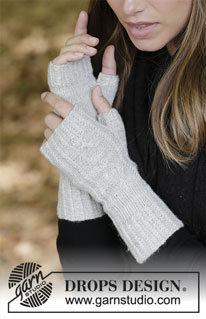


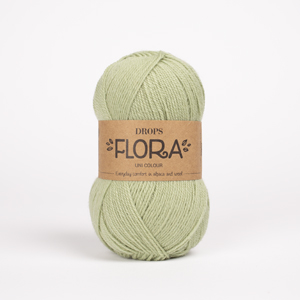
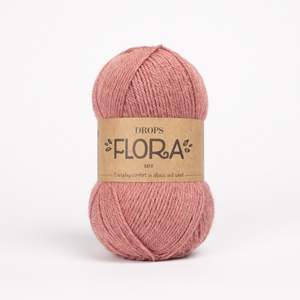










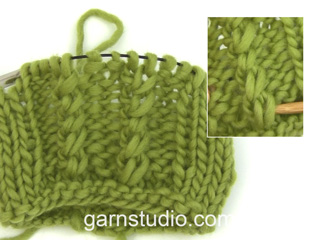
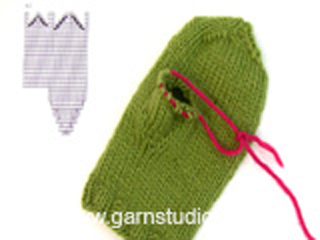



































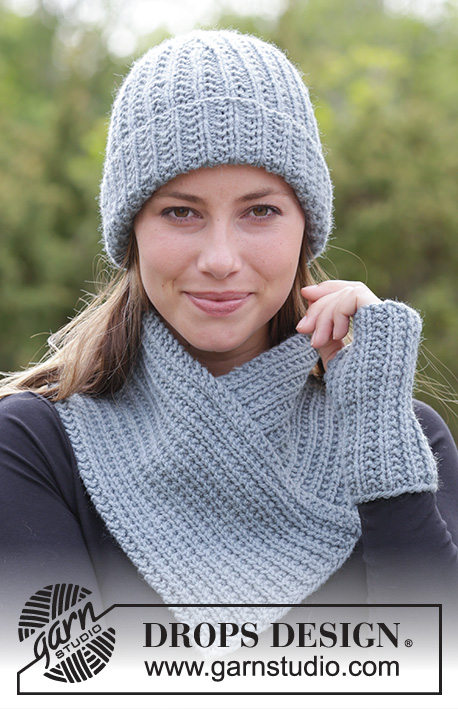








Comments / Questions (17)
Kan ik het patroon vd polswarmers ook met rondbreinaalden breien ipv naalden zonder knop? En zo ja, kan ik het patroon dan gewoon letterlijk volgen?? En hoe lang moet mijn kabel dan zijn (ik heb 40, 60 en 80)?
28.11.2023 - 18:20DROPS Design answered:
Dag Marca,
Jazeker dat kan. Kijk even welke lengte voor jou het handigst werkt. Zelf werk ik liever met een wat langere draad in combinatie met de magic loop techiek.
29.11.2023 - 09:31Ok mais les 14 augmentation vu que c'est écrit ne pas les faire au dessus des 22 mailles du motif je les fait de quelle coté ? coté motif ou coté jersey?
24.04.2023 - 10:16DROPS Design answered:
Bonjour Mme Amouret, oups je n'en étais pas au bon niveau... vous devez augmenter ces 14 mailles au-dessus des 40 mailles jersey, pour ne pas toucher aux 22 mailles de A.3. Bon tricot!
24.04.2023 - 10:40Bonjour je suis arriver au niv des 14 augmentation , quand vous dite ne pas augmenter au dessus des 22 mailles du motif , et ce que ca veut dire que j'augmente sur le jersey ou j'augmente coté motif, et en regardant la photo du modèle j'ai l'impression que si je continue en motif A2 ca ne continuera pas la suite du motif de A3 car la sur ma mitaine j'ai que 1 cercle de dessiner sur le milieu de la mitaine et pas 2 comme sur le dessin en photo
23.04.2023 - 10:45DROPS Design answered:
Bonjour Mme Amouret, tout dépend de votre tensionen hauteur; on va mettre les mailles du pouce en attente 10 cm (2ème taille) après avoir commencé A.3, autrement dit après 34 rangs de A.3 (soit 19 rangs de A.3 + les 15 premiers rangs), terminez votre motif A.3 si souhaité avant les côtes de la main - et ajustez en conséquence la hauteur des côtés de A.2. Bon tricot!
24.04.2023 - 10:10Ok donc j'augmente sur mes 2 mailles du début et je continue le motif comme avant c ca? mais comment si retrouver pour retomber dans le bon sens du motif
21.04.2023 - 13:35DROPS Design answered:
Bonjour Mme Amouret, pour la 1ère augmentation du pouce, augmenter 1 m avant + 1 maille après la maille avec le marqueur, la 2ème fois, augmentez avant puis après ces 3 mailles, la 3ème fois, augmentez avant puis après ces 5 mailles etc. J'ai peur de ne pas bien comprendre pas votre question , je suis désolée, le motif A.3 ne sera pas décalé, on rajoute juste des mailles de chaque côté de la maille avec un marqueur, les autres mailles se tricotent comme avant: en jersey endroit et diagramme A.3 sur le dessus de la main (lisez le diagramme de droite à gauche tous les tours car on tricote en rond). Bon tricot!
21.04.2023 - 14:11Vu que je fait mes mitaine sur des aiguille circulaire , du coup et ce que je doit faire une augmentation au début et a la fin du travail pour former mon pouce vers la droite ?
19.04.2023 - 14:15DROPS Design answered:
Bonjour Mme Amouret, l'avant-dernière maille reste la même maille dans tous les cas, vous devez juste augmenter 2 m à chaque fois: 1 m avant cette maille + 1 maille après cette maille (puis 1 m avant ces mailles et 1 m après ces mailles). Pour la mitaine droite, vous augmenterez de part et d'autre de la 2ème maille du tour. Bon tricot!
19.04.2023 - 15:16Bonjour je suis au niveau de l'augmentation pour le gousser du pouce mais j'ai du mal a comprendre comment proceder exactement et surtout a quel moment j'augmente car je vois pas comment faire de chaque coté sur le coté paume et savoir du coup si on continue tjr sur le motif A3 car c pas indiquer cordialement,
19.04.2023 - 11:27DROPS Design answered:
Bonjour Mme Amouret, vous augmentez d'abord de chaque côté de l'avant-dernière maille du tour (mitaine gauche), autrement dit, avant + après cette maille (= 2 mailles à chaque fois), la fois suivante, vous augmentez avant + après ces 3 mailles et ainsi de suite - cf AUGMENTATIONS-1 (gousset du pouce, mitaines):. Les autres mailles se tricotent exactement comme avant. Bon tricot!
19.04.2023 - 13:10Bonjour je suis perdu je suis au niv ou je dois commencer le diagramme A3 mais je comprends pas pour les 2 mailles jersey c pas écrit comment les tricoter et vous mettez A3 = 22 maille et 26 maille en Jersey mais ça fait pas 50 mailles du coup comment on tricoté les 2 dernières mailles
09.04.2023 - 09:25DROPS Design answered:
Bonjour Mme Amouret, en taille S/.M, si vous avez bien 50 mailles sur vos aiguilles, tricotez-les ainsi: 2 m jersey (en rond, on tricote ces mailles toujours à l'endroit), puis tricotez les 22 mailles de A.3 et terminez par 26 mailles jersey, soit: 2+22+26=50. Bon tricot!
11.04.2023 - 12:29Hej! Jag förstår inte hur jag ska sticka varv 21-24 i diagram A1. Arbetet har 54 maskor men där finns bara beskrivna totalt sett 8 maskor. Hur kommer jag vidare? Jag stickar pannbandet. Tack!
11.03.2021 - 20:14DROPS Design answered:
Hei Johanna. Når du er ferdig med rad 20 i A.1, begynner du på 1. rad igjen. De 8 maskene du ser på slutten av diagrammet er samme maske som er på 1.- 4. rad i diagrammet. mvh DROPS design
15.03.2021 - 13:02Bonjour, Le modèle « Annely » le diagramme A.1 , après les 20 rangs entre les 2 colonnes (marquer en jaune) je fais quoi ??? J’attends impatiemment votre réponse pour faire ce modèle Merci Sylvie
21.02.2021 - 23:17DROPS Design answered:
Bonjour Sylvie, les différents motifs de A.1 se répètent sur un nombre différents de rangs, autrement dit, quand les 20 rangs du diagramme sont terminés, reprenez-le au début sur toutes les mailles sauf sur les 2 torsades de 4 mailles - ces torsades doivent être croisées tous les 6 rangs. Bon tricot!
22.02.2021 - 09:35Prøver å skrive ut mønsteret/oppskriften på pulsvanter. Det står at det er gratismønster og jeg kan ikke ha på mobilen hele tiden....... Kan dere hjelpe meg🥰
28.12.2019 - 15:40DROPS Design answered:
Hei Kari. Da er det bare å klikke på skriver ikonet, nedenfor bildet eller til høyre. Får du ikke skrevet ut, sjekk dine skriver innstillinger på din printer/telefon/PC. God Fornøyelse!
20.01.2020 - 11:06